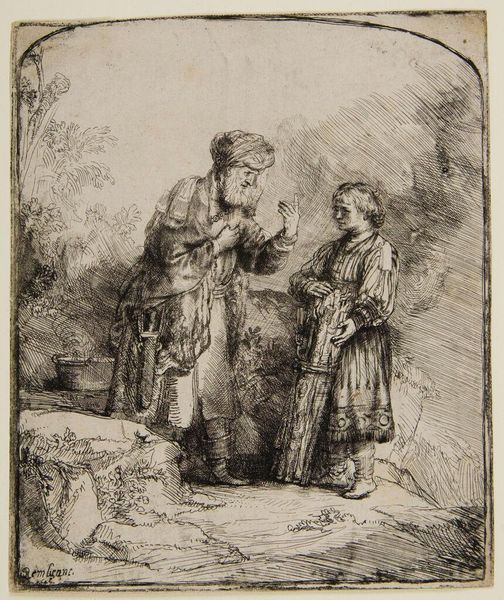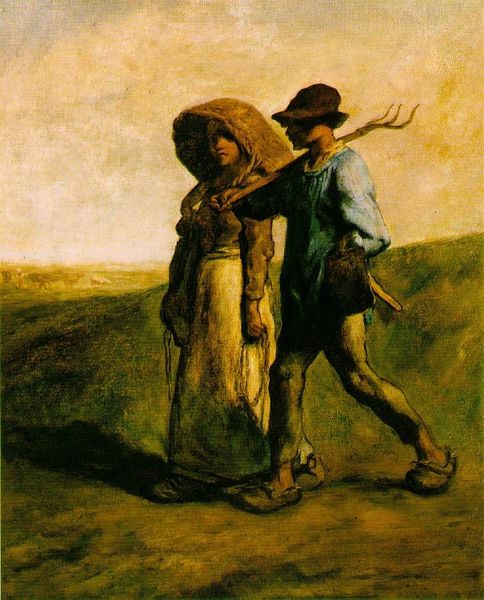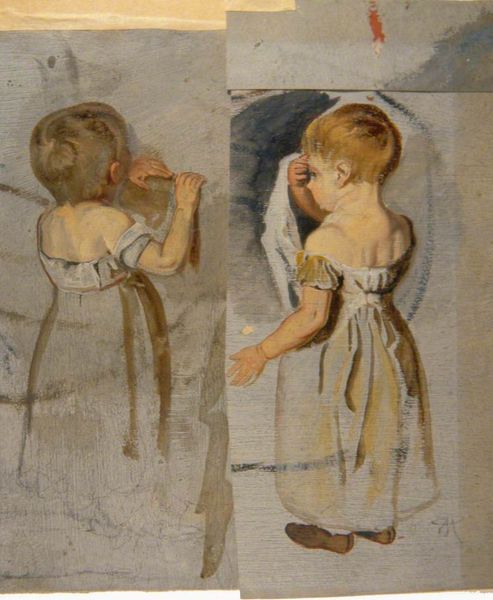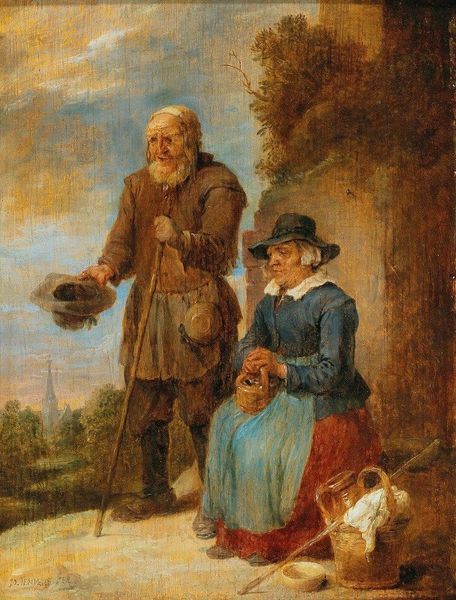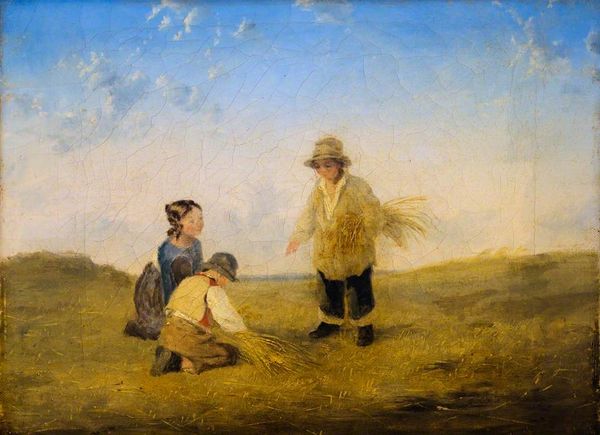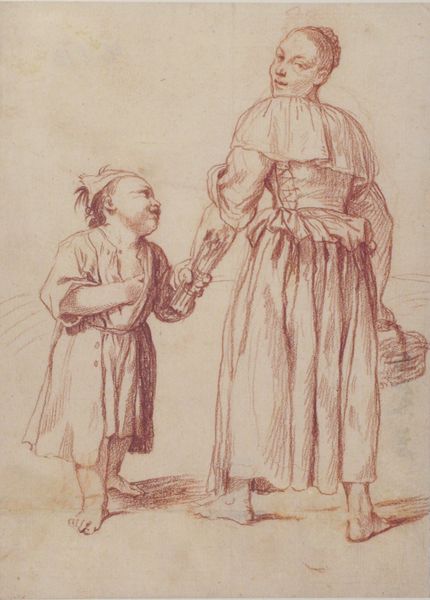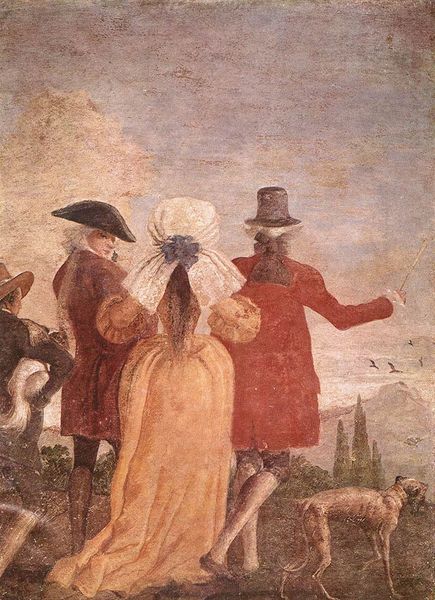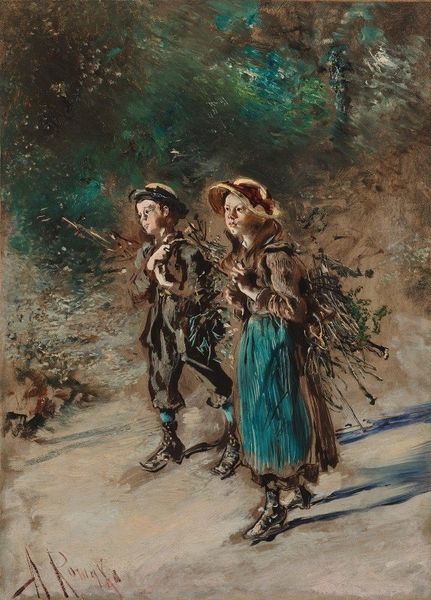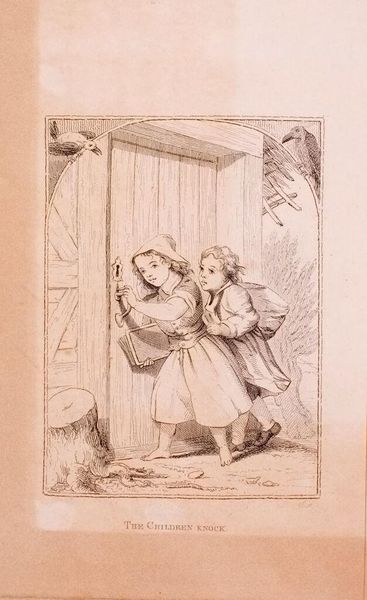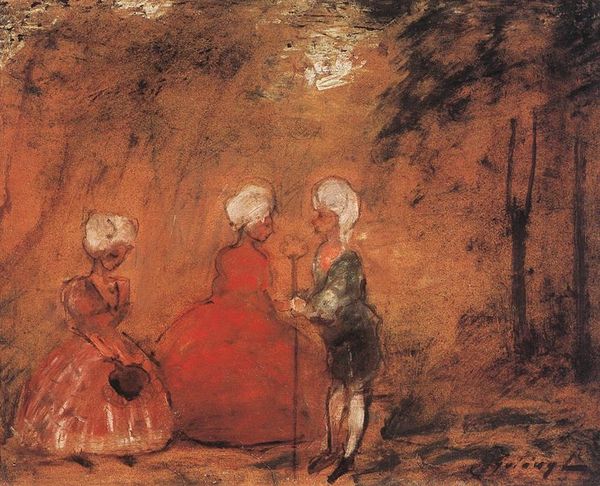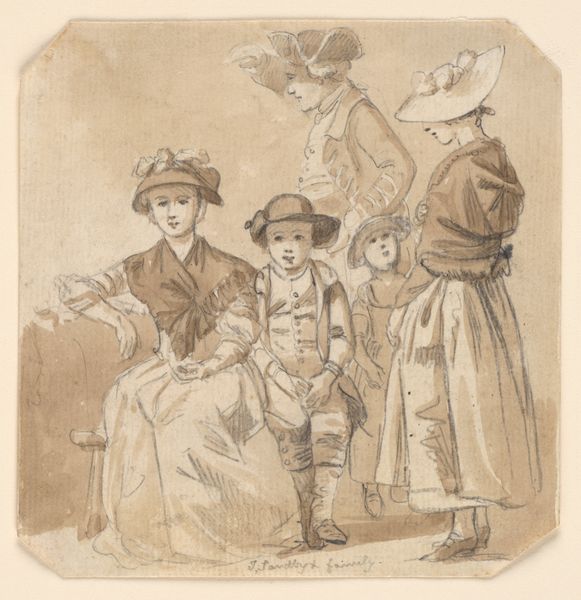
#
toned paper
#
character portrait
#
charcoal drawing
#
possibly oil pastel
#
coloured pencil
#
underpainting
#
19th century
#
watercolour bleed
#
watercolour illustration
#
watercolor
Copyright: Public domain
Curator: Looking at "Two Children," created around 1848 by George Harvey, what strikes you first? Editor: The light. It's this warm, diffused glow. I get the feeling the artist wanted to evoke a memory, like something half-forgotten. What media did he use? It has a very muted and nostalgic feel. Curator: It appears to be primarily a watercolour, maybe over charcoal or something similar, on a toned paper. This method contributes to the soft focus you perceive, giving the picture a certain immediacy. Editor: That immediacy also speaks to how artworks reflect—or maybe even shape—contemporary attitudes about childhood. Were these children of the professional classes or maybe from an agricultural laboring family? The detail of their costumes indicates social-economic positioning of the family. The girl on the left holding the dried shrub is interesting…what does this inclusion mean? Curator: Precisely! Consider how clothing like the hats and dresses for both girls and even that dried shrub were commodities circulating within an emergent, and burgeoning marketplace for consumer goods at that time. We can analyze each item in this picture, each line, as being produced by workshops, designed with specific market demographics in mind. This watercolor isn't simply portraying childhood innocence, it's illustrating how childhood was increasingly becoming a manufactured idea and the clothing became a badge for the new order. Editor: Absolutely, this could be interpreted as illustrating Victorian constructs of childhood itself, that became a powerful factor in creating and selling clothes that promoted the ideal of ‘childhood’ by way of marketing through a commercial image production and distribution process, particularly how these artworks entered into Victorian exhibitions where images were turned into spectacles of the commodity. Curator: And we, standing here today, continue to decode those social messages embedded within the material reality. It all underscores how much artwork operates, participates and influences societal perceptions and structures. Editor: Indeed, it causes me to pause and think about our assumptions of "art," and the labor, the commerce and conditions of the 1840's required to produce what some may describe as only charming imagery. Curator: And, with that expanded awareness, we walk away seeing more clearly.
Comments
No comments
Be the first to comment and join the conversation on the ultimate creative platform.
